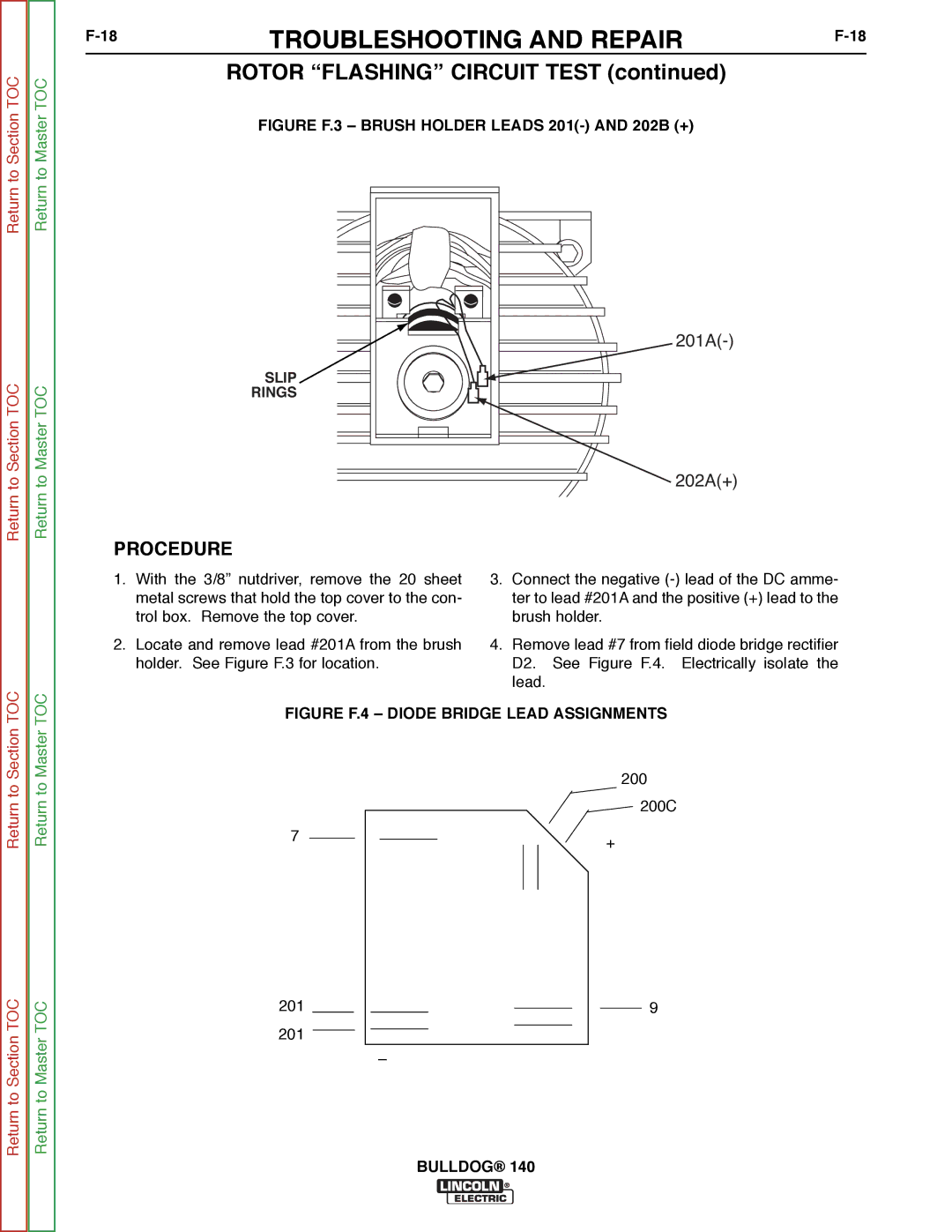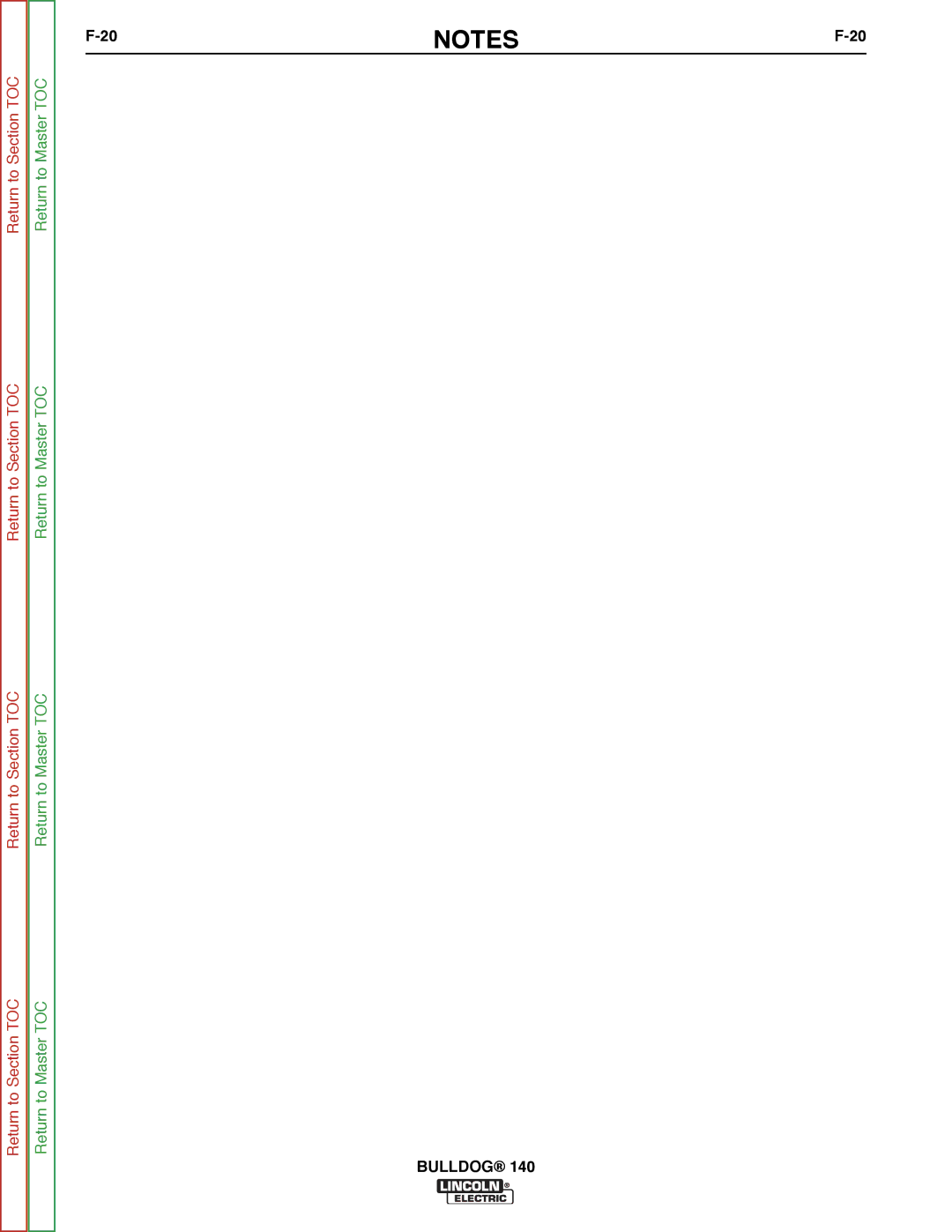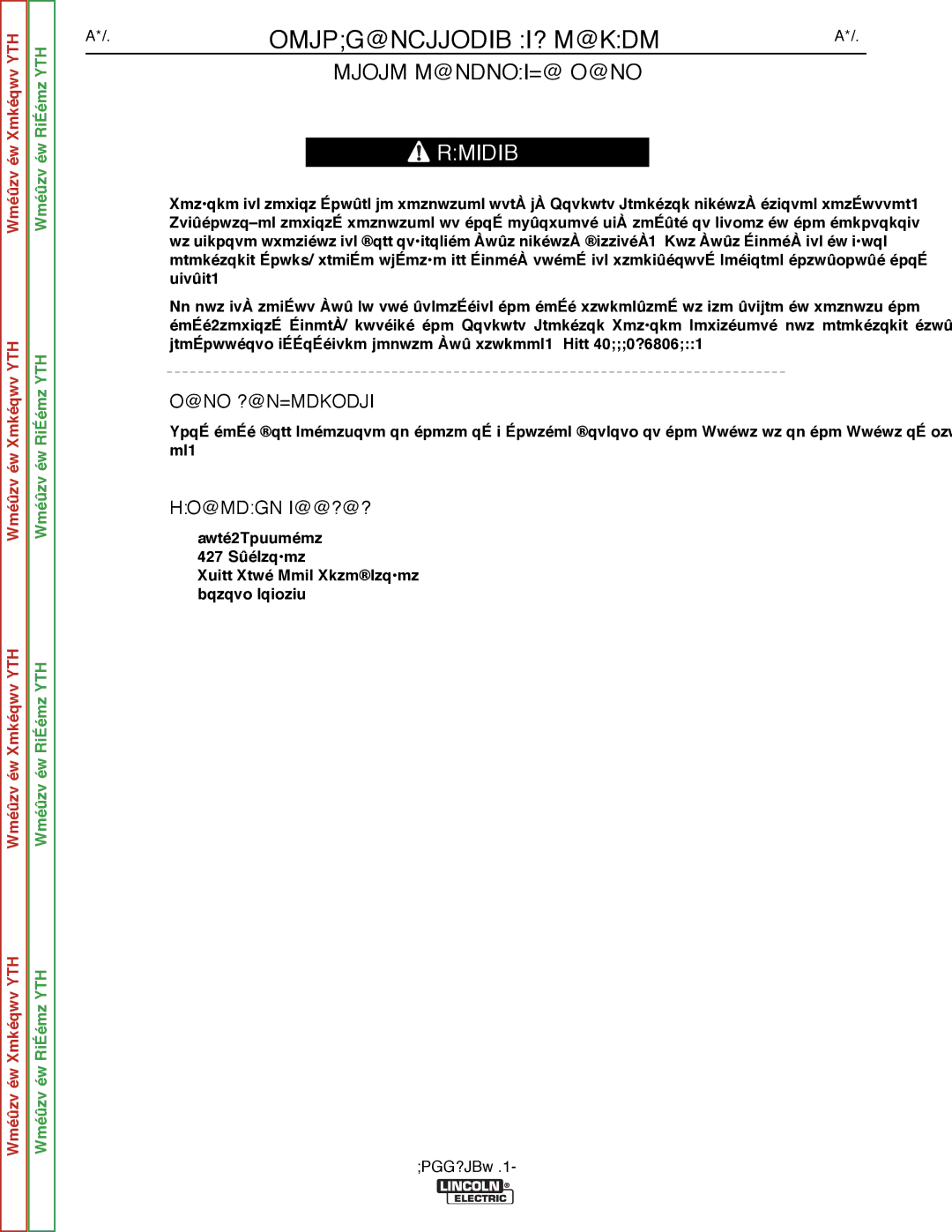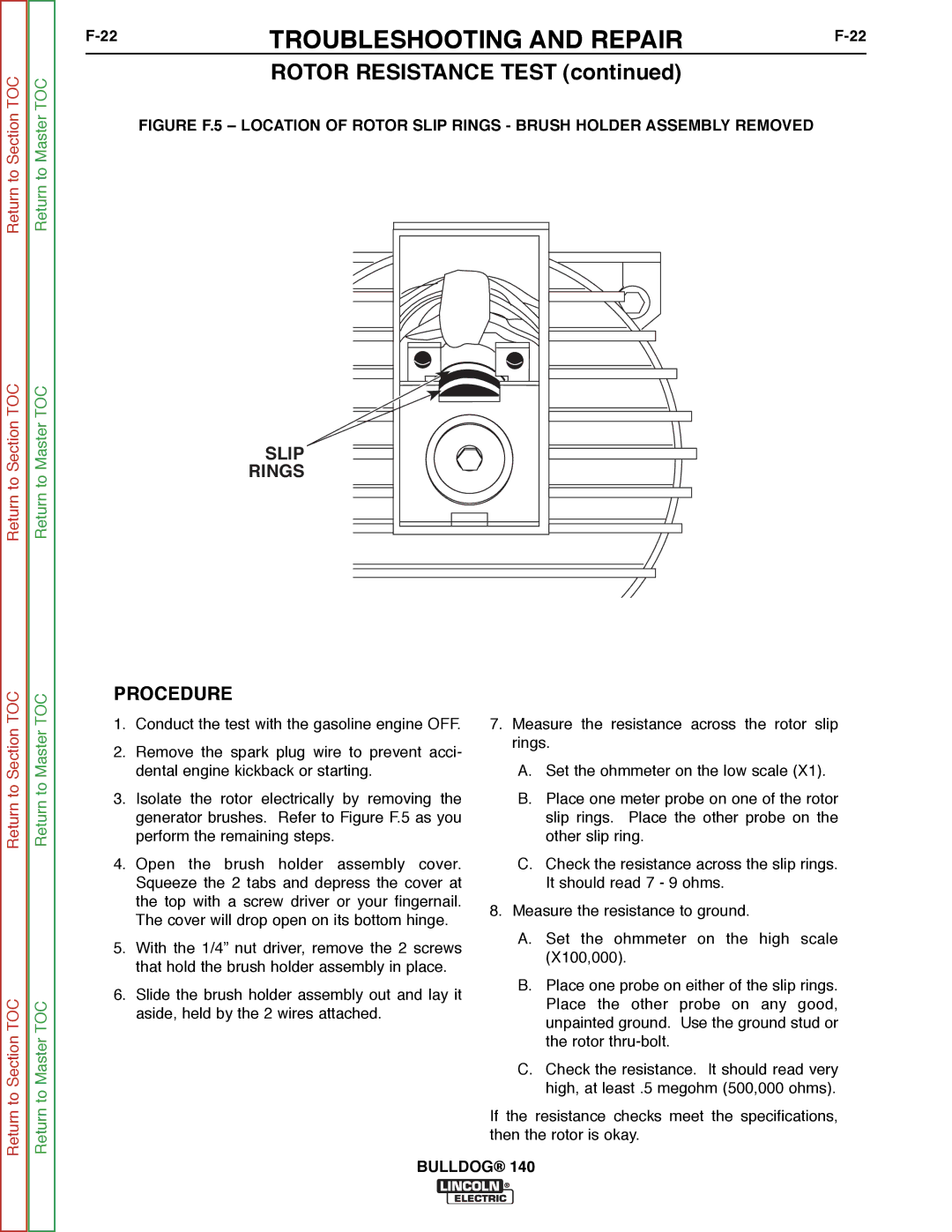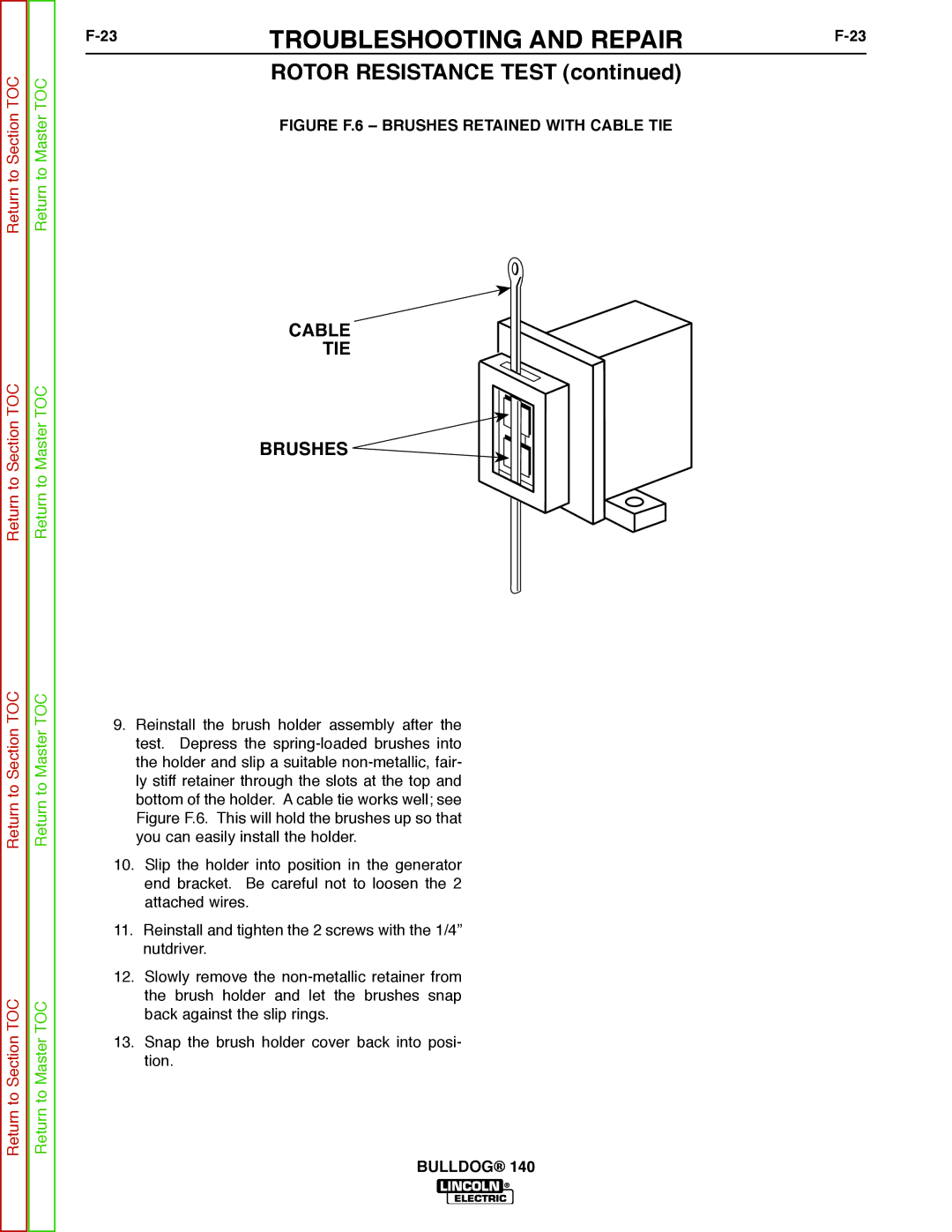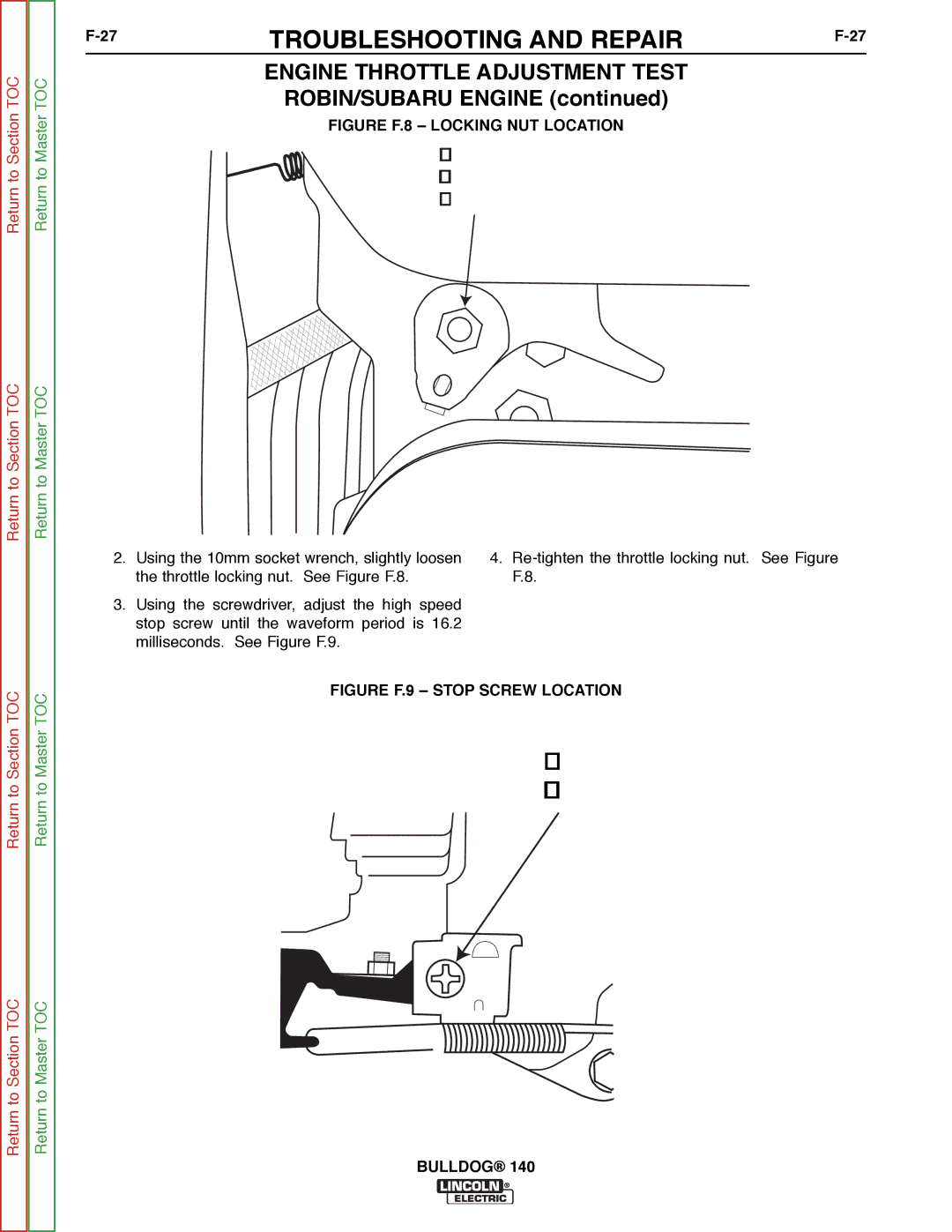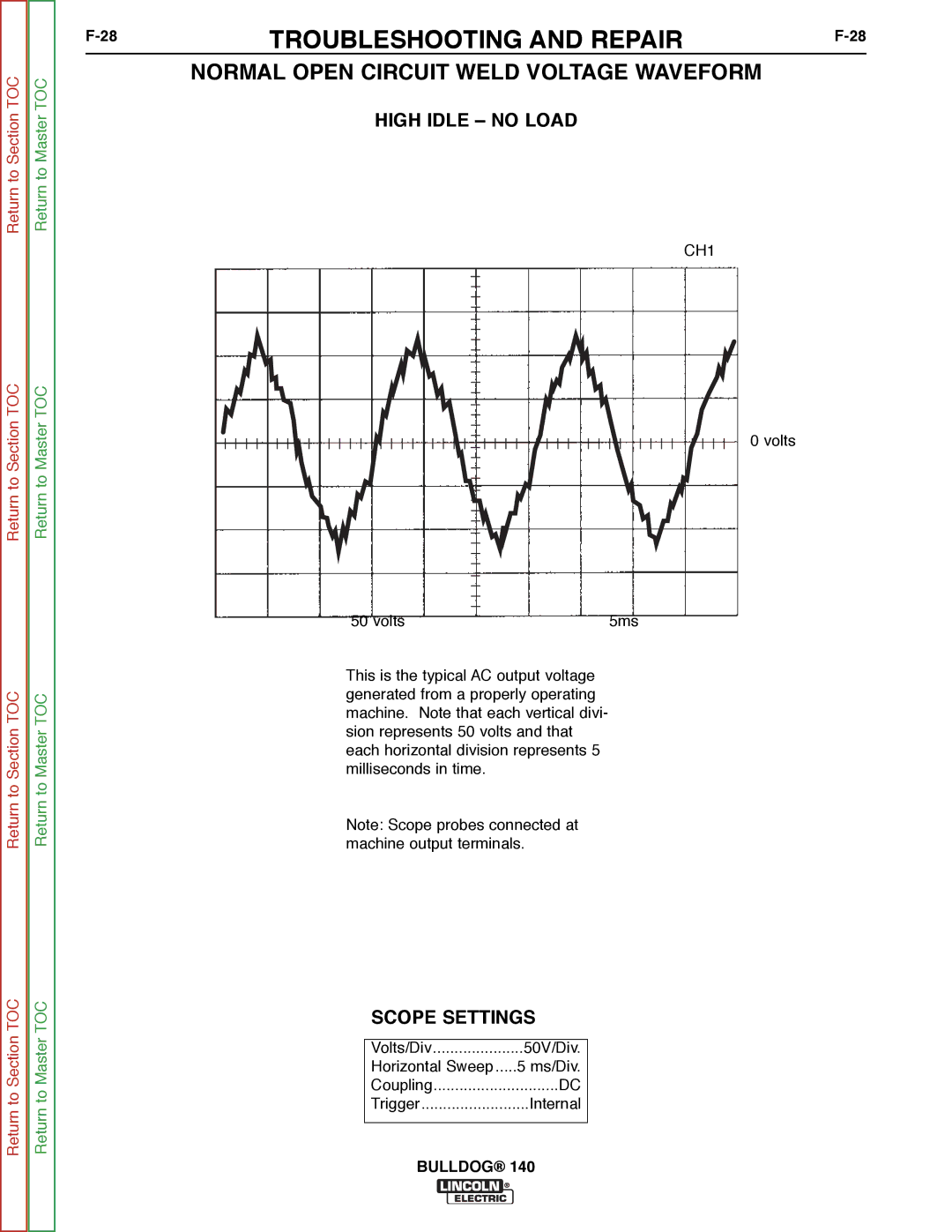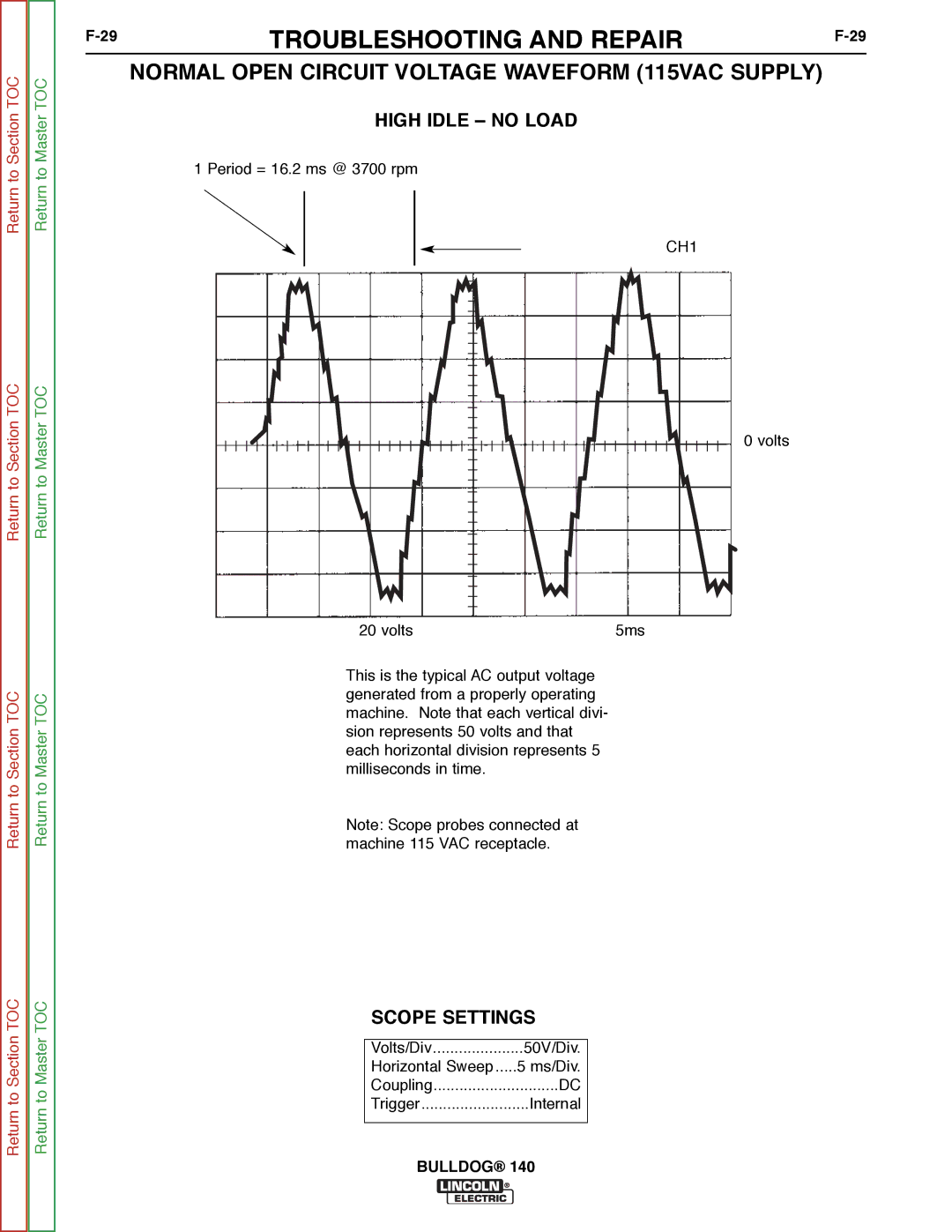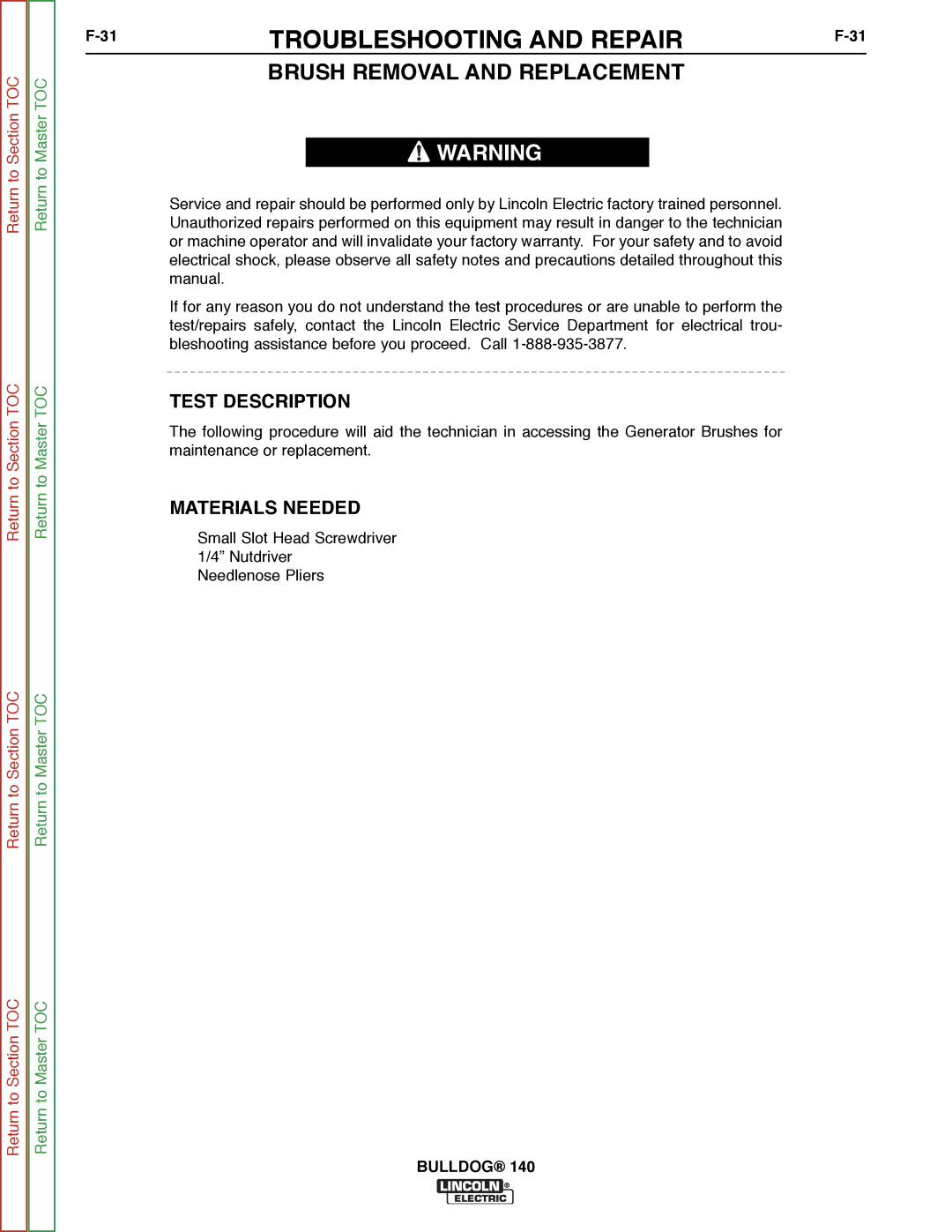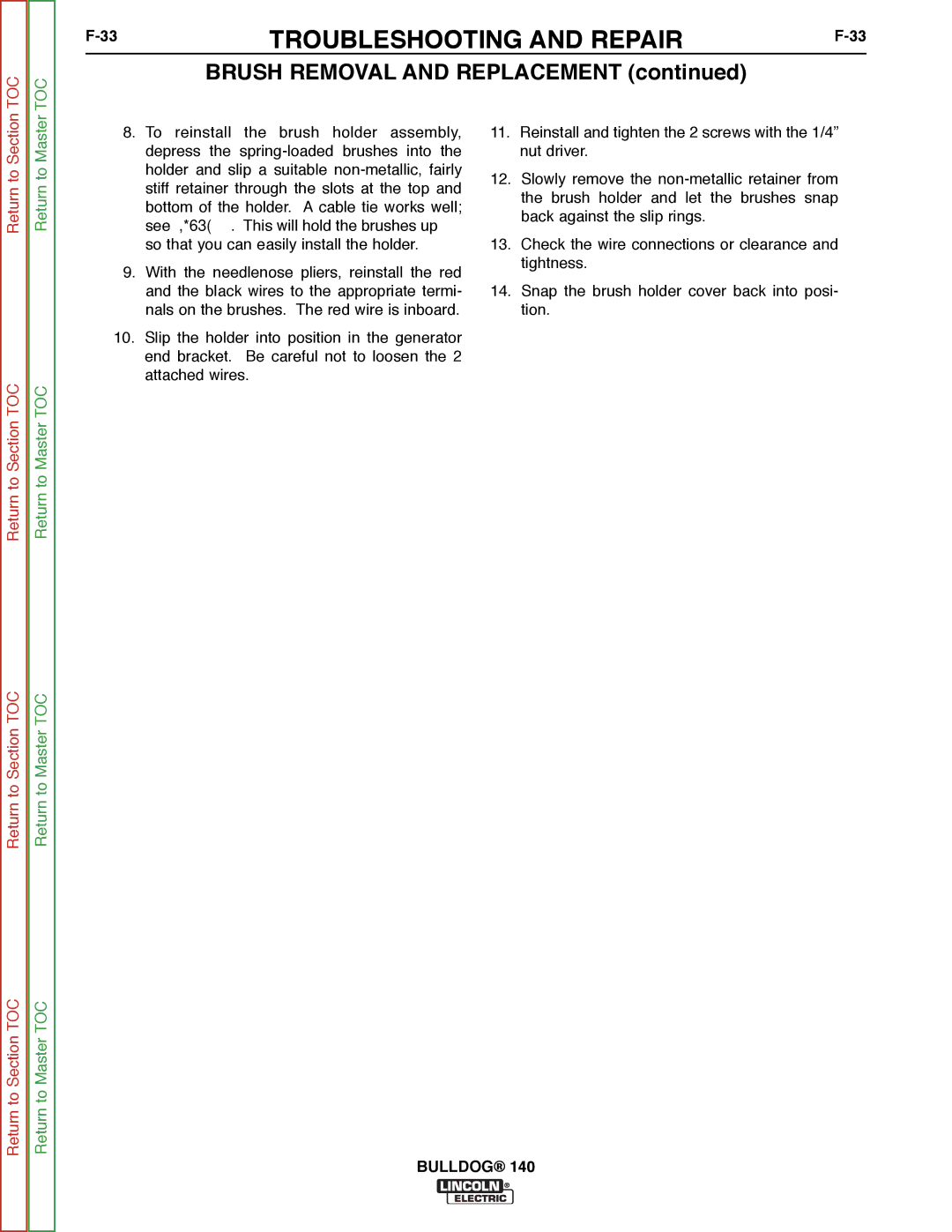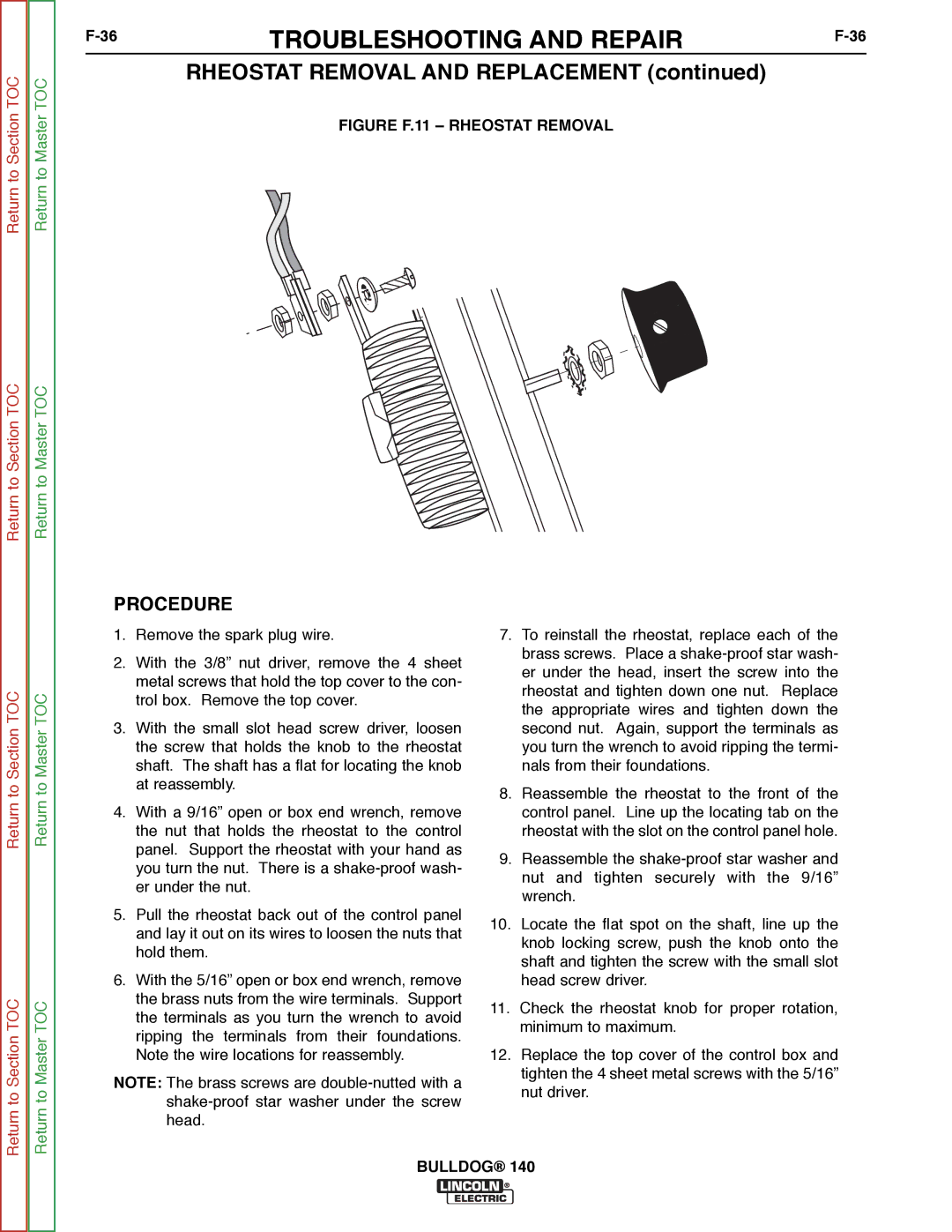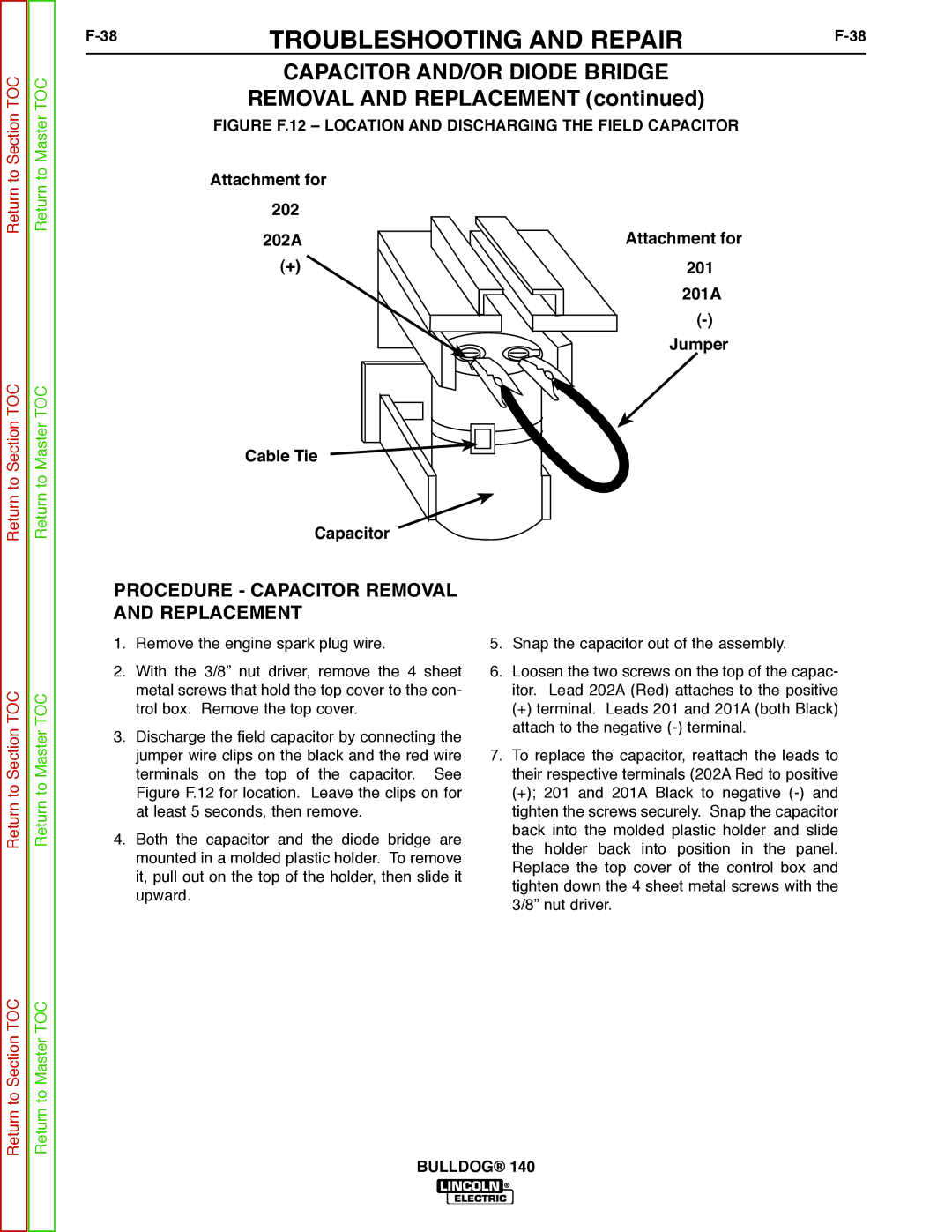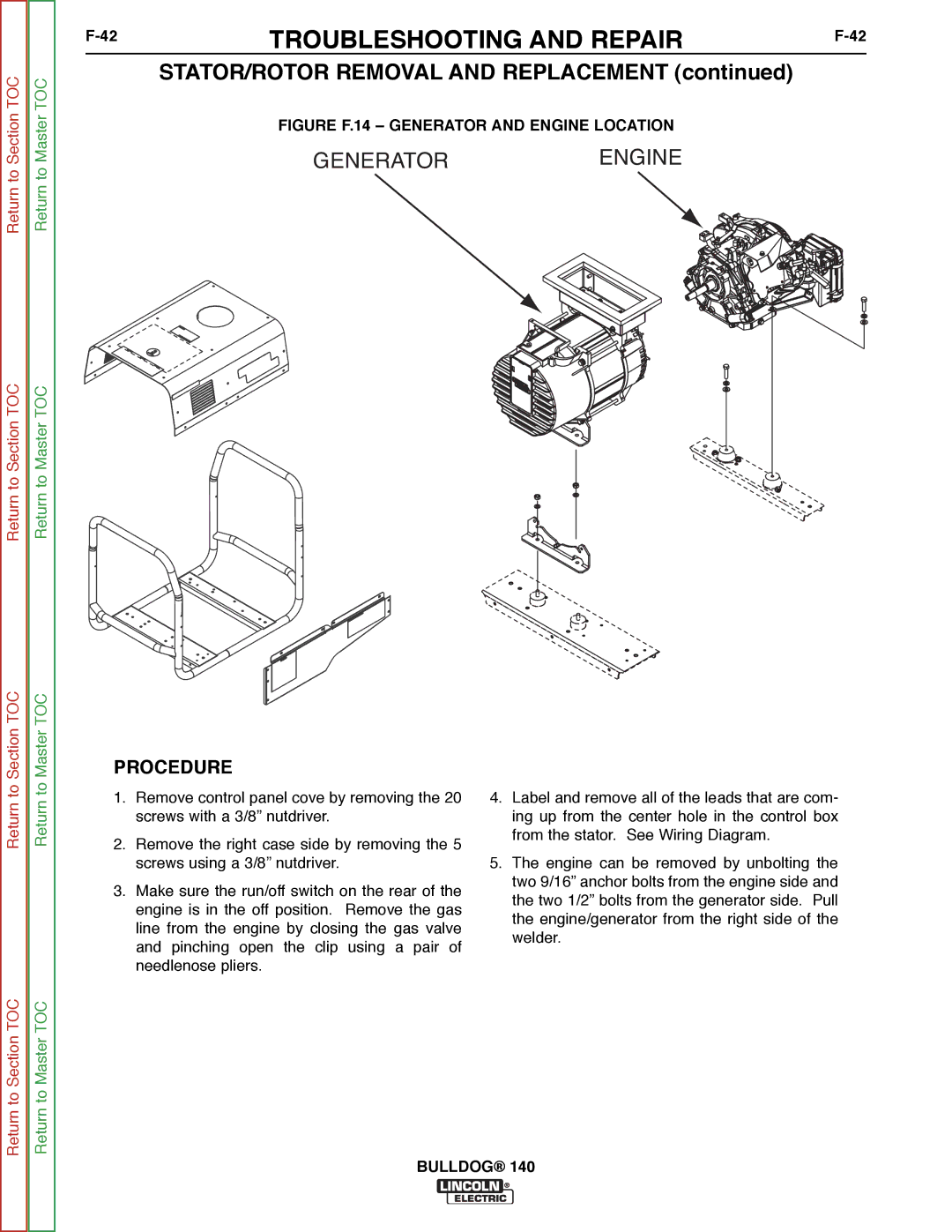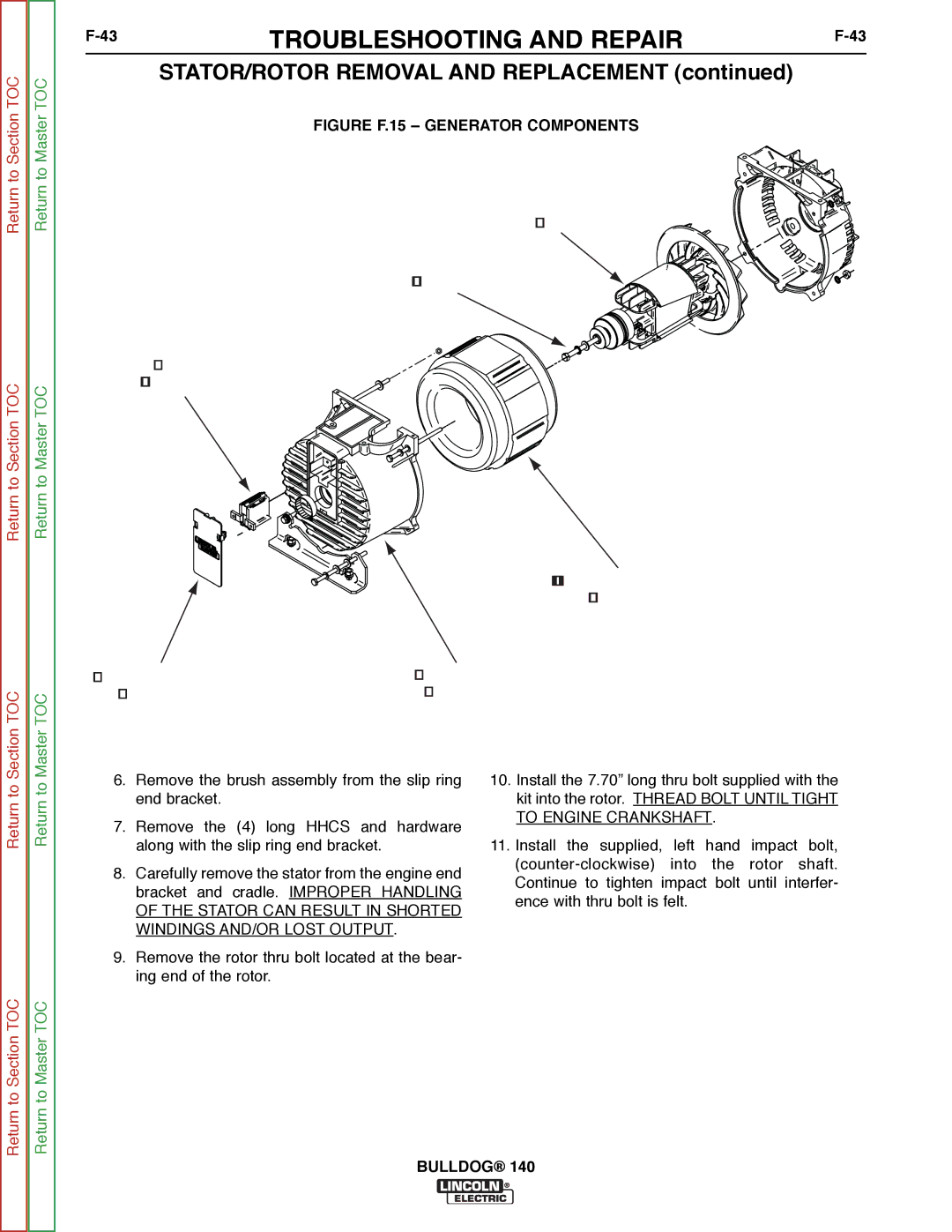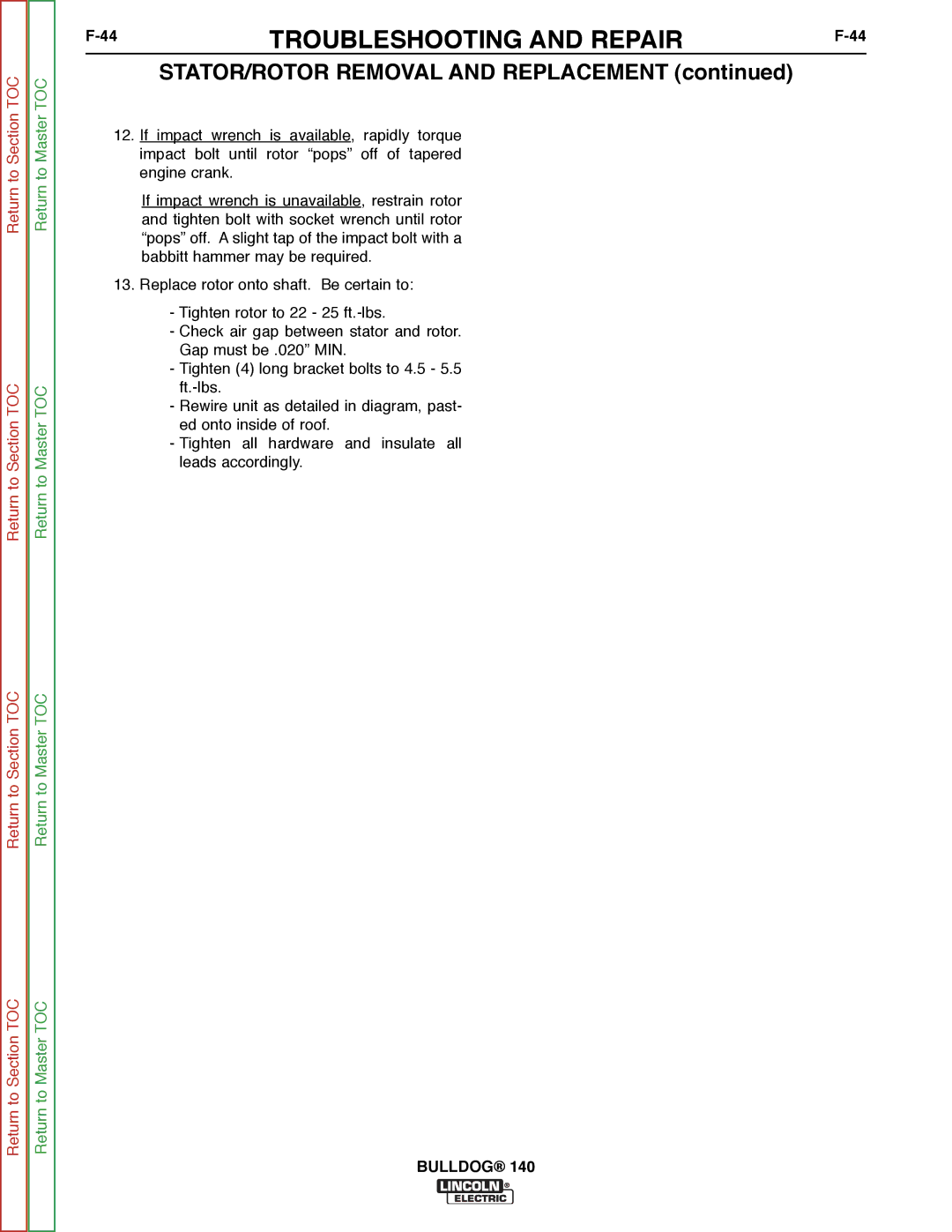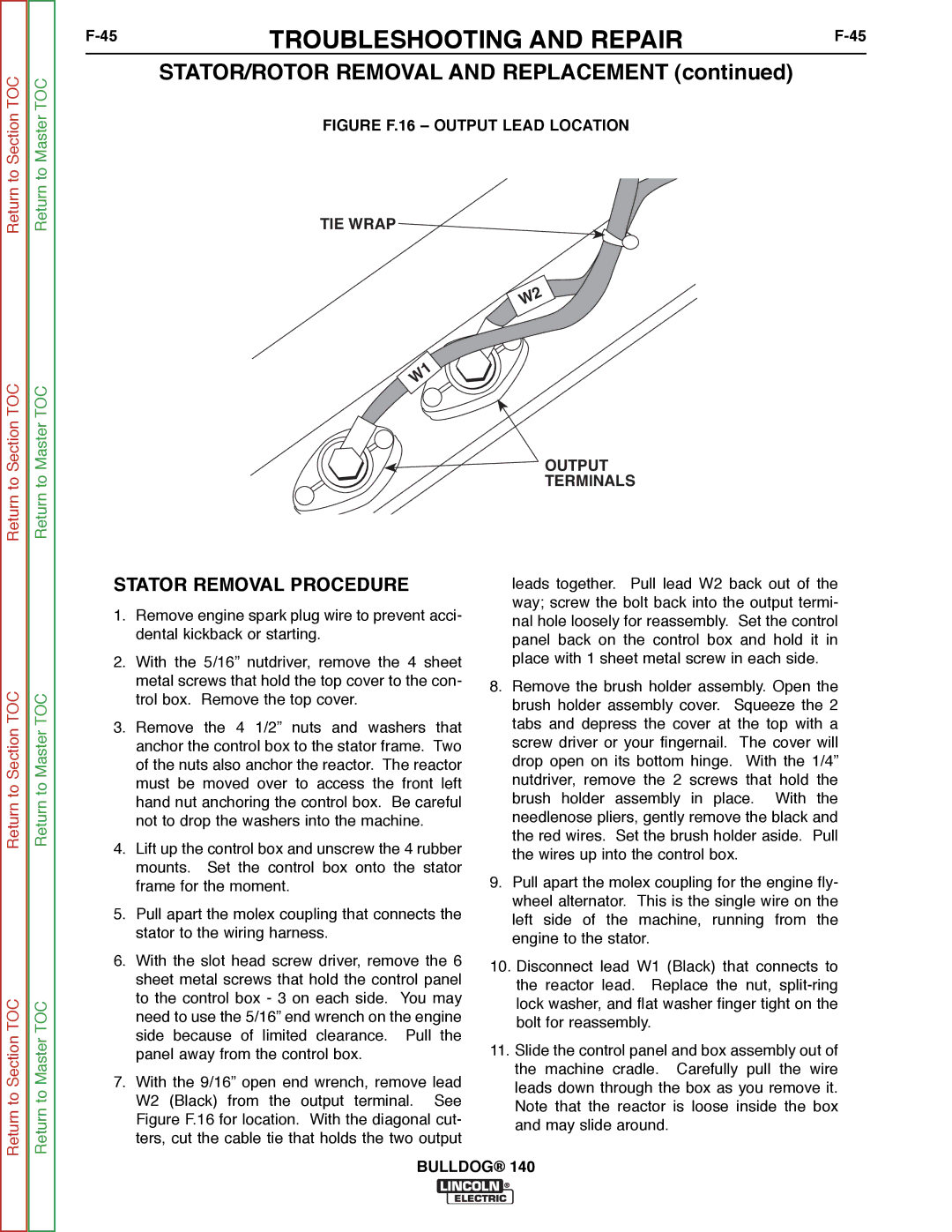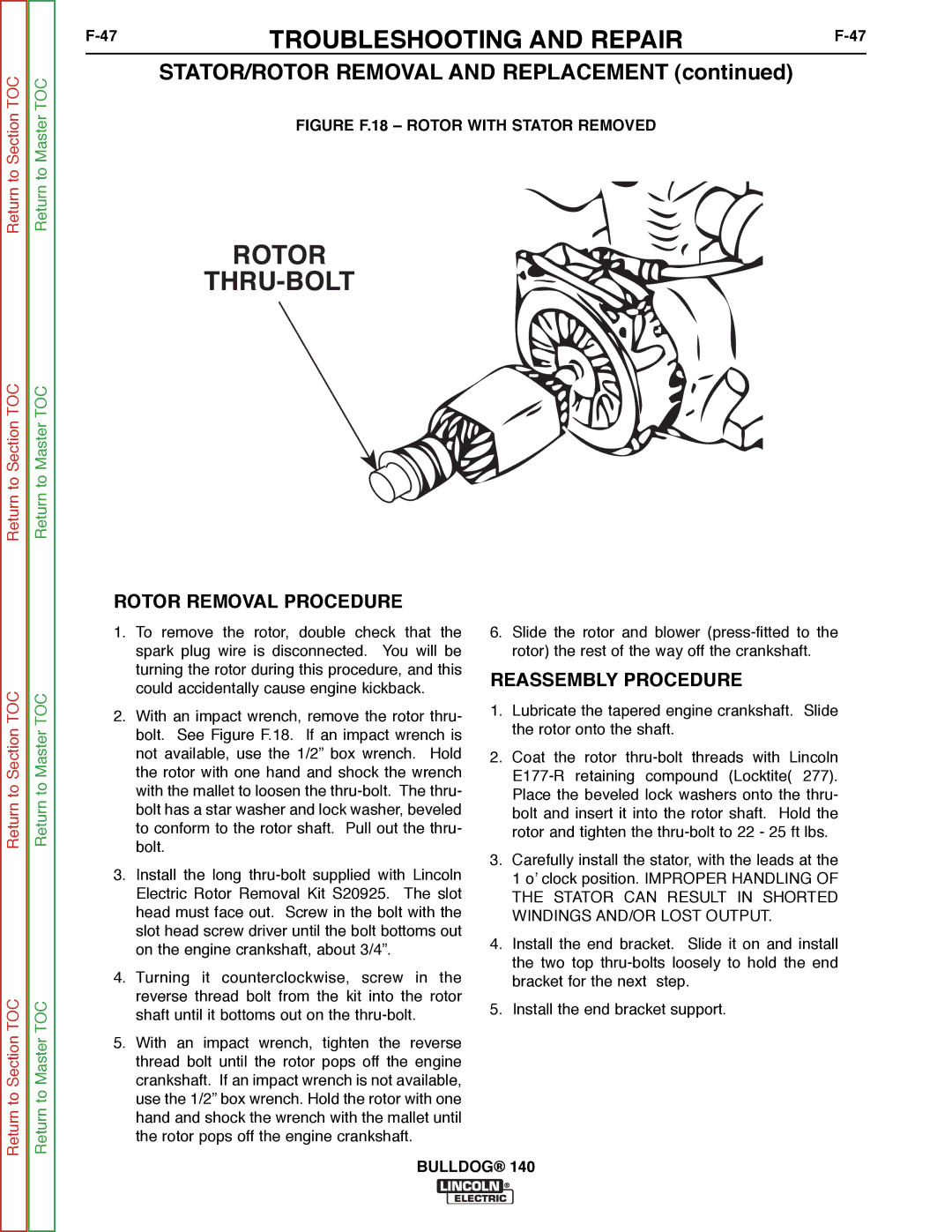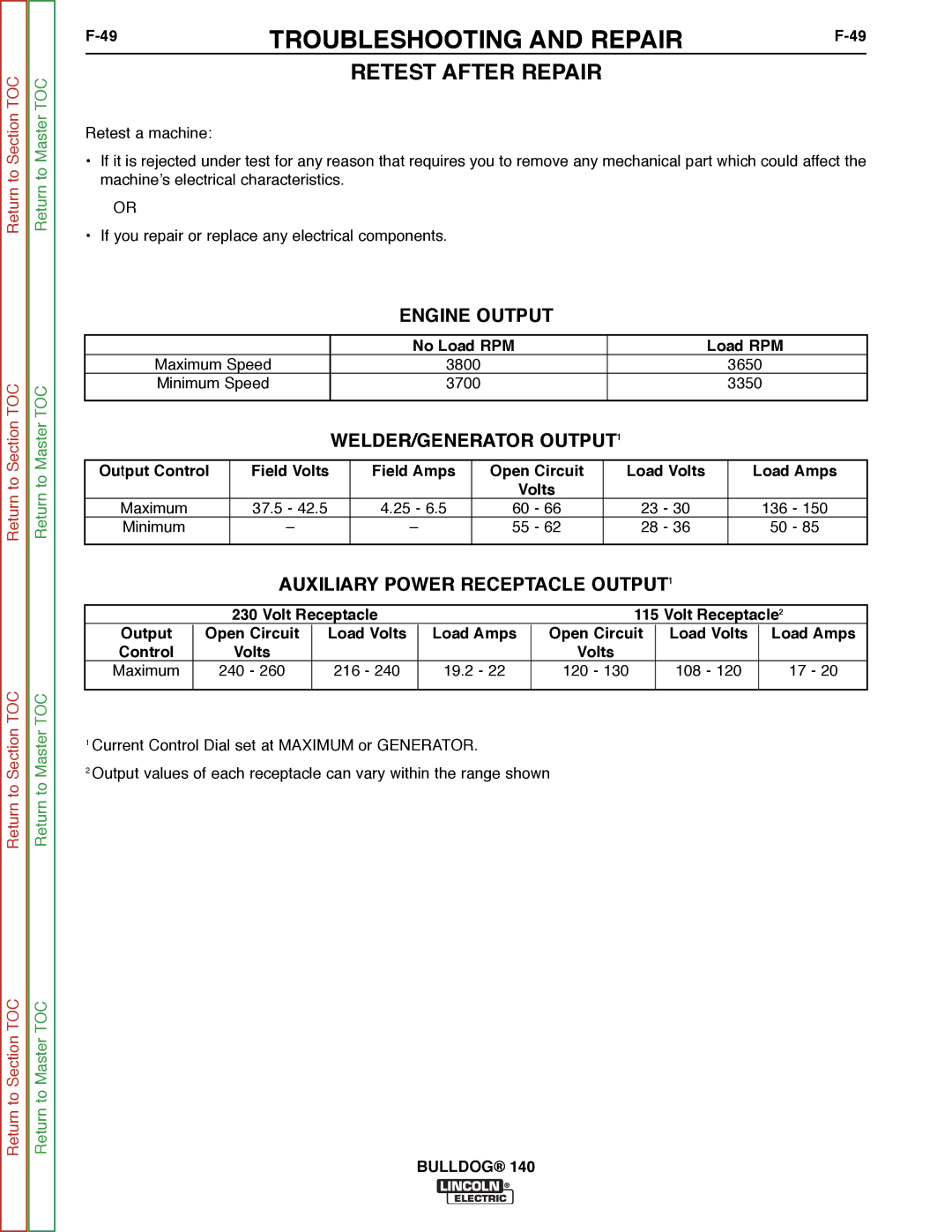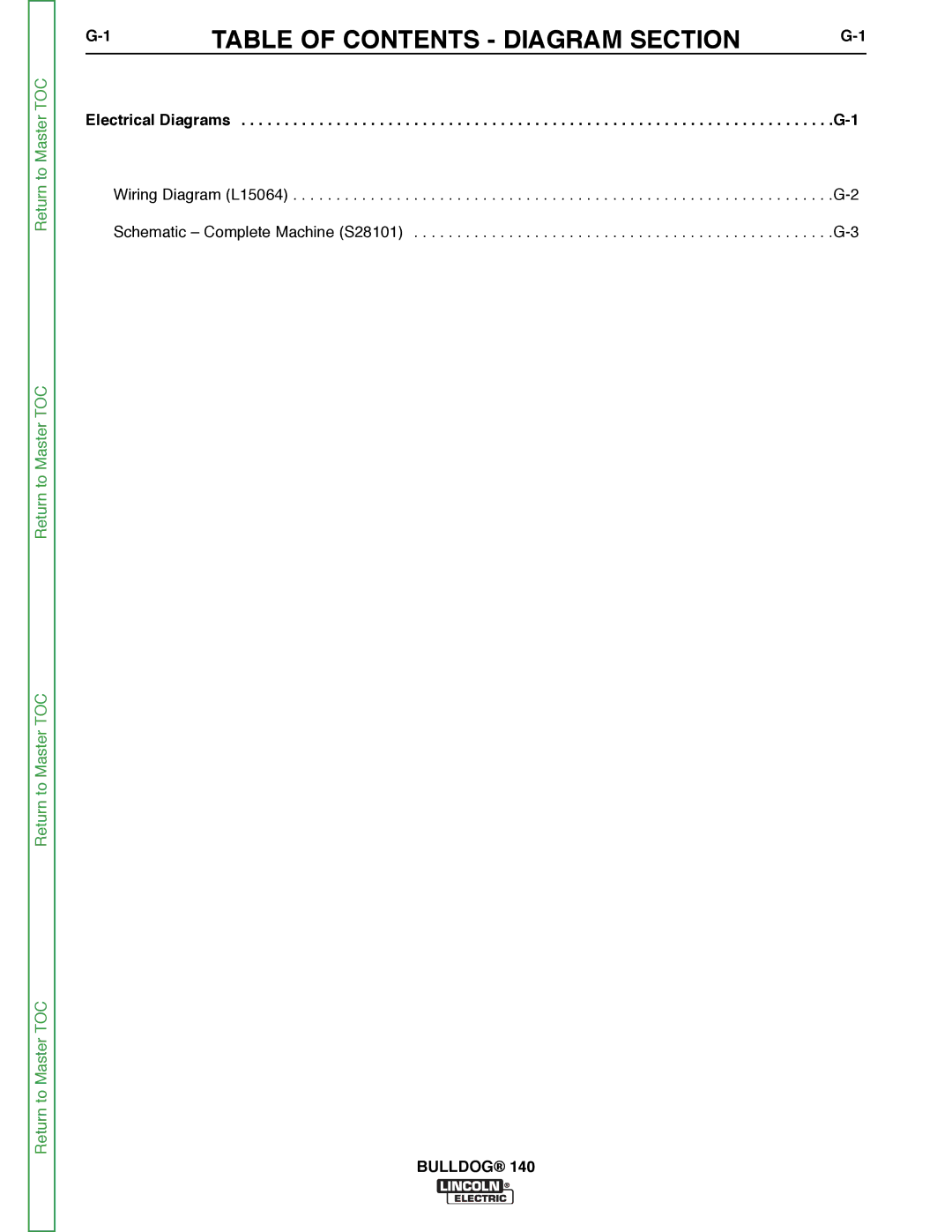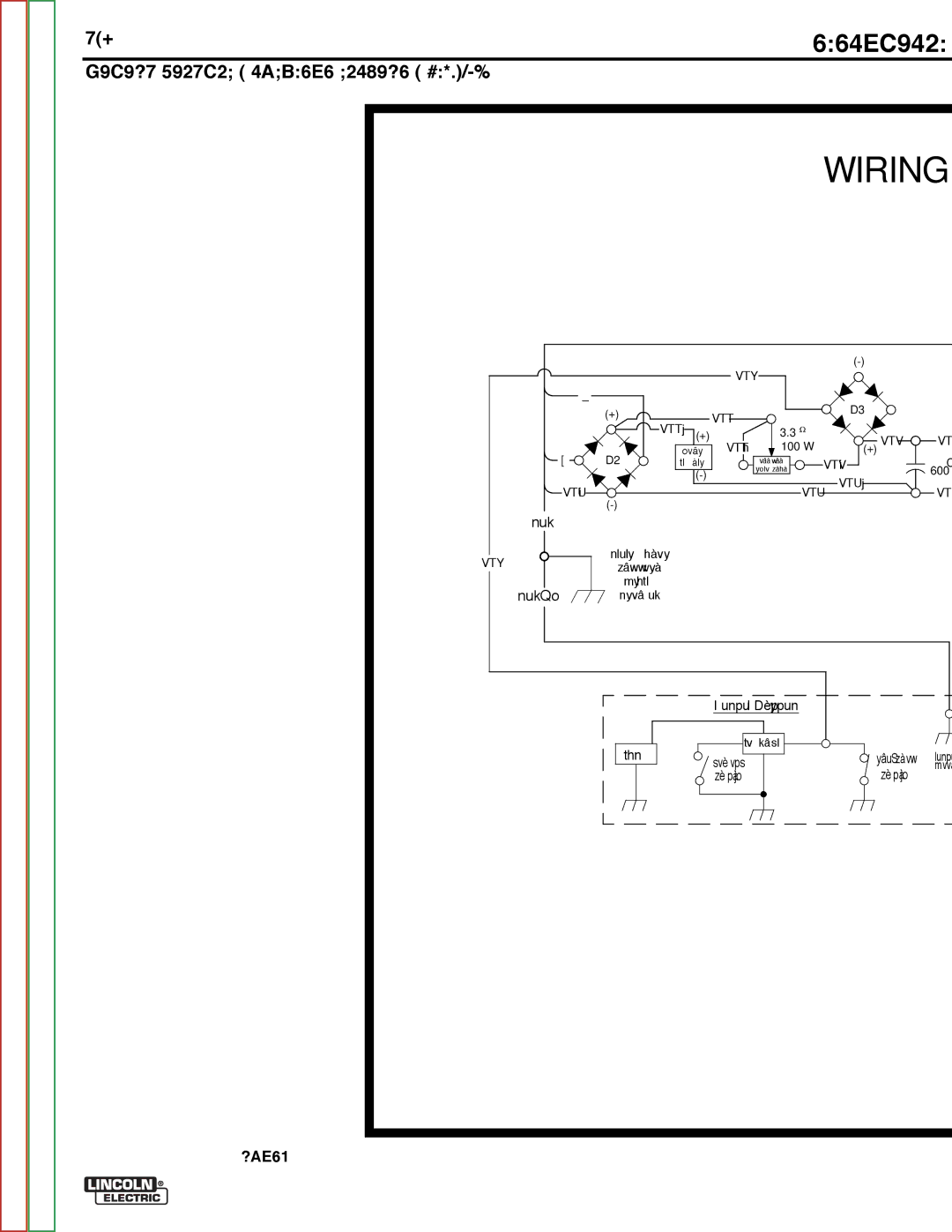
Return to Section TOC
Return to Section TOC
Return to Section TOC
Return to Section TOC
Return to Master TOC
Return to Master TOC
Return to Master TOC
Return to Master TOC
TROUBLESHOOTING AND REPAIR | ||
|
TYPICAL WELD OUTPUT WAVEFORM
MACHINE LOADED
50V
0 volts
20 volts | 5ms |
MACHINE LOADED TO 125 AMPS AT 23 VAC
This is the typical AC output voltage generated from a properly operating machine. Note that each vertical divi- sion represents 20 volts and that each horizontal division represents 5 milliseconds in time. The machine was loaded with a resistance grid bank.
Note: Scope probes connected at machine output terminals.
SCOPE SETTINGS
Volts/Div | 20V/Div. |
Horizontal Sweep | 5 ms/Div. |
Coupling | DC |
Trigger | Internal |
|
|
